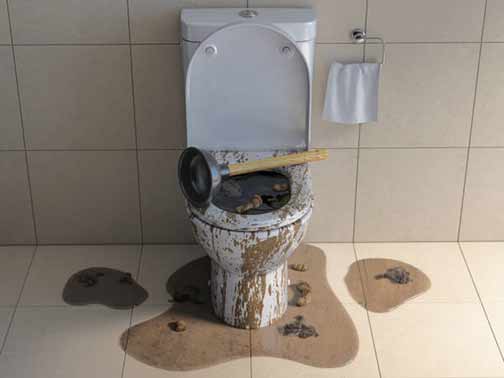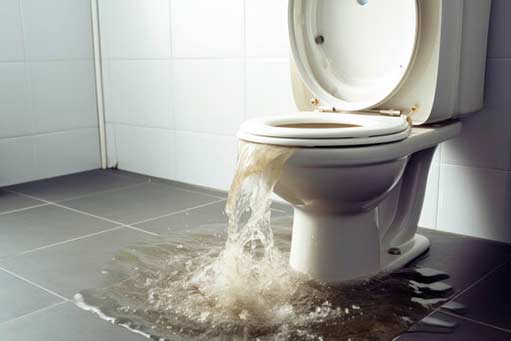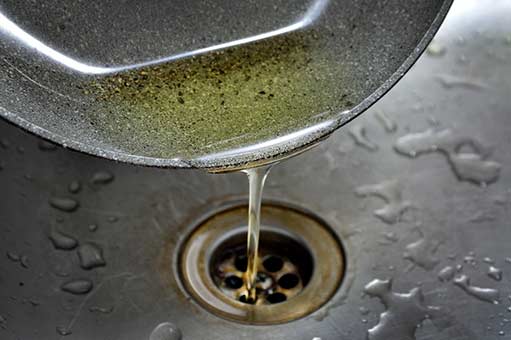
To effectively address the issue of overflowing toilets, it is crucial to first understand the underlying causes. Toilet overflow can be attributed to several factors, including blockages in the plumbing system, malfunctioning components, or excessive water pressure. Identifying the root cause is the first step in implementing an appropriate solution. This understanding not only aids in immediate repair but also helps in preventing future occurrences, ensuring a well-maintained and efficient plumbing system.
Diagnosing Plumbing Blockages: Identifying and Clearing Obstructions
One of the most common causes of toilet overflow is a blockage in the plumbing system. This can occur due to the accumulation of debris, such as toilet paper, sanitary products, or other foreign objects that obstruct the flow of water. Professional plumbers often use specialized equipment, like plumbing snakes or hydro-jetting tools, to effectively diagnose and clear these blockages. These tools help in reaching deep into the plumbing system, ensuring that even the most stubborn obstructions are removed, restoring the normal flow of water.
Repairing Malfunctioning Toilet Components: Ensuring Optimal Functionality
Another potential cause of toilet overflow is the malfunctioning of toilet components, such as the fill valve, flush valve, or flapper. When these parts fail to function properly, they can lead to improper water flow and overflow. Repairing or replacing these components requires a detailed understanding of their operation and the use of appropriate tools. Professionals often recommend routine maintenance to ensure these parts are in optimal condition, preventing unexpected malfunctions that could lead to overflow issues.
Managing Water Pressure Issues: Balancing the System for Efficiency
Excessive water pressure can also contribute to toilet overflow. High water pressure can cause the toilet to fill too quickly, leading to overflow. Installing a pressure regulator can help manage water pressure and prevent overflow. It is important to monitor water pressure regularly and make adjustments as necessary to maintain a balanced system. This not only prevents overflow but also protects the entire plumbing system from potential damage caused by high pressure.
Implementing Preventive Measures: Proactive Steps to Avoid Overflow
Preventive measures play a significant role in avoiding toilet overflow. Regular maintenance checks, proper usage guidelines, and the installation of water-saving devices can significantly reduce the risk of overflow. Educating users about what can and cannot be flushed is also essential in preventing blockages and subsequent overflow. By adopting these preventive strategies, homeowners can maintain an efficient plumbing system and avoid the inconvenience of toilet overflow.
Professional Tools and Techniques for Effective Repair: Mastering the Art of Plumbing
Professionals use a variety of tools and techniques for effective toilet repair. From plumbing snakes to augers, these tools are designed to address specific issues efficiently. Techniques such as hydro jetting provide a thorough cleaning of the plumbing system, ensuring that blockages are completely removed. Understanding the proper use of these tools and techniques is essential for effective repair. This expertise allows professionals to tackle even the most complex plumbing issues with confidence and precision.

Ensuring Long-Term Solutions: Strategies for Lasting Results
For a long-term solution to toilet overflow, it is important to address both immediate concerns and underlying issues. This involves not only repairing the current problem but also implementing strategies to prevent future occurrences. Professionals often recommend regular inspections, upgrades to plumbing systems, and the use of high-quality components to ensure lasting results. These strategies provide homeowners with peace of mind, knowing that their plumbing system is reliable and efficient.
Educating Users for Better Practices: Empowering Homeowners with Knowledge
Education is key in preventing toilet overflow. Users must be informed about proper toilet usage and maintenance practices. This includes understanding what materials can be safely flushed, recognizing early signs of plumbing issues, and knowing when to seek professional help. Providing users with this knowledge empowers them to contribute to the maintenance and longevity of their plumbing systems. An informed user is better equipped to prevent issues and ensure the efficient operation of their plumbing system.
Collaborating with Professional Plumbers: Leveraging Expertise for Optimal Solutions
While some toilet overflow issues can be addressed with DIY methods, collaborating with professional plumbers ensures a comprehensive and effective solution. Professionals bring expertise, experience, and specialized tools that can address complex plumbing issues. Establishing a relationship with a trusted plumber can provide peace of mind and prompt assistance when needed. This collaboration ensures that homeowners have access to the best solutions for their plumbing needs.
Innovative Solutions in Toilet Repair: Embracing New Technologies
The field of toilet repair is continually evolving, with innovative solutions emerging to address common issues. From advanced plumbing technologies to eco-friendly components, these innovations offer efficient and sustainable options for toilet repair. Staying informed about these developments can help homeowners and professionals alike implement the best solutions for toilet overflow. Embracing these innovations ensures that plumbing systems are not only efficient but also environmentally friendly.
Conclusion: Achieving Swift Resolutions to Toilet Overflow Concerns
Overflowing toilets can be a frustrating and inconvenient issue, but with the right knowledge and professional tips, effective repair is achievable. By understanding the causes, implementing preventive measures, and collaborating with experts, homeowners can ensure swift resolutions to toilet overflow concerns. Embracing innovative solutions and educating users further enhances the effectiveness of these strategies, leading to a well-maintained and efficient plumbing system. With these comprehensive strategies, homeowners can enjoy a reliable and hassle-free plumbing experience.

